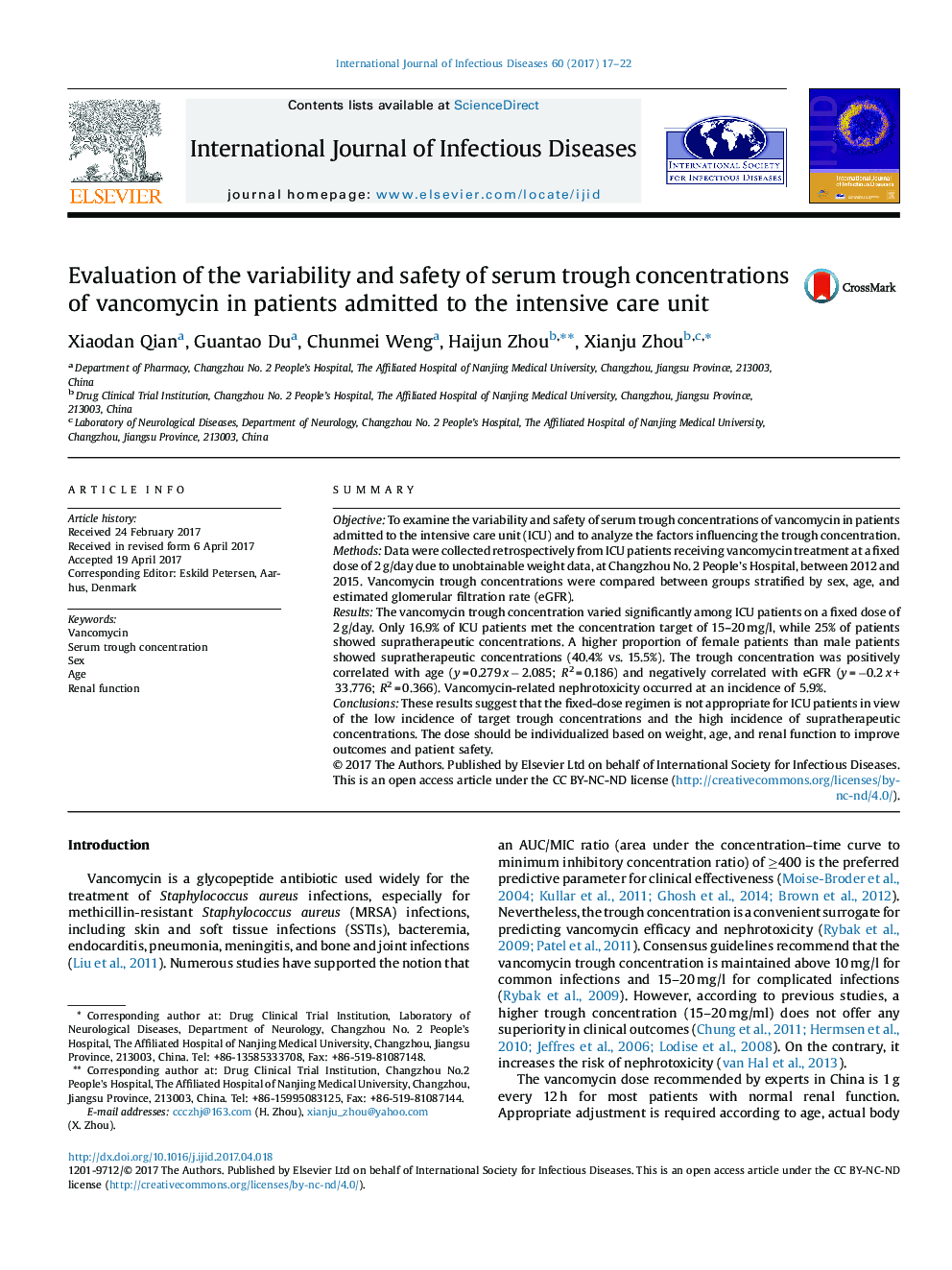| Article ID | Journal | Published Year | Pages | File Type |
|---|---|---|---|---|
| 5667151 | International Journal of Infectious Diseases | 2017 | 6 Pages |
â¢The vancomycin trough concentration varies significantly in intensive care unit (ICU) patients.â¢Sex, age, and the estimated glomerular filtration rate are independent factors affecting the trough concentration.â¢The fixed-dose regimen of 2 g/day may be inappropriate in ICU patients.â¢The dose should be individualized based on weight, age, and renal function.
SummaryObjectiveTo examine the variability and safety of serum trough concentrations of vancomycin in patients admitted to the intensive care unit (ICU) and to analyze the factors influencing the trough concentration.MethodsData were collected retrospectively from ICU patients receiving vancomycin treatment at a fixed dose of 2 g/day due to unobtainable weight data, at Changzhou No. 2 People's Hospital, between 2012 and 2015. Vancomycin trough concentrations were compared between groups stratified by sex, age, and estimated glomerular filtration rate (eGFR).ResultsThe vancomycin trough concentration varied significantly among ICU patients on a fixed dose of 2 g/day. Only 16.9% of ICU patients met the concentration target of 15-20 mg/l, while 25% of patients showed supratherapeutic concentrations. A higher proportion of female patients than male patients showed supratherapeutic concentrations (40.4% vs. 15.5%). The trough concentration was positively correlated with age (y = 0.279 x â 2.085; R2 = 0.186) and negatively correlated with eGFR (y = â0.2 x + 33.776; R2 = 0.366). Vancomycin-related nephrotoxicity occurred at an incidence of 5.9%.ConclusionsThese results suggest that the fixed-dose regimen is not appropriate for ICU patients in view of the low incidence of target trough concentrations and the high incidence of supratherapeutic concentrations. The dose should be individualized based on weight, age, and renal function to improve outcomes and patient safety.
